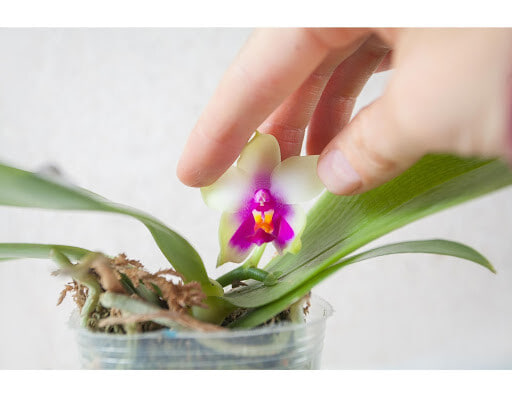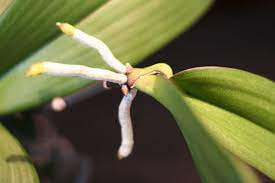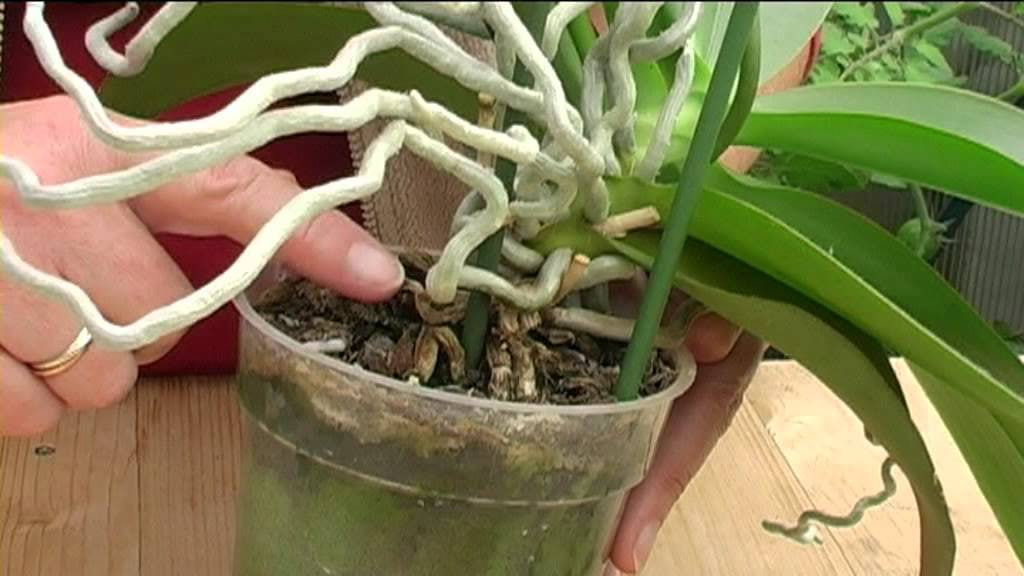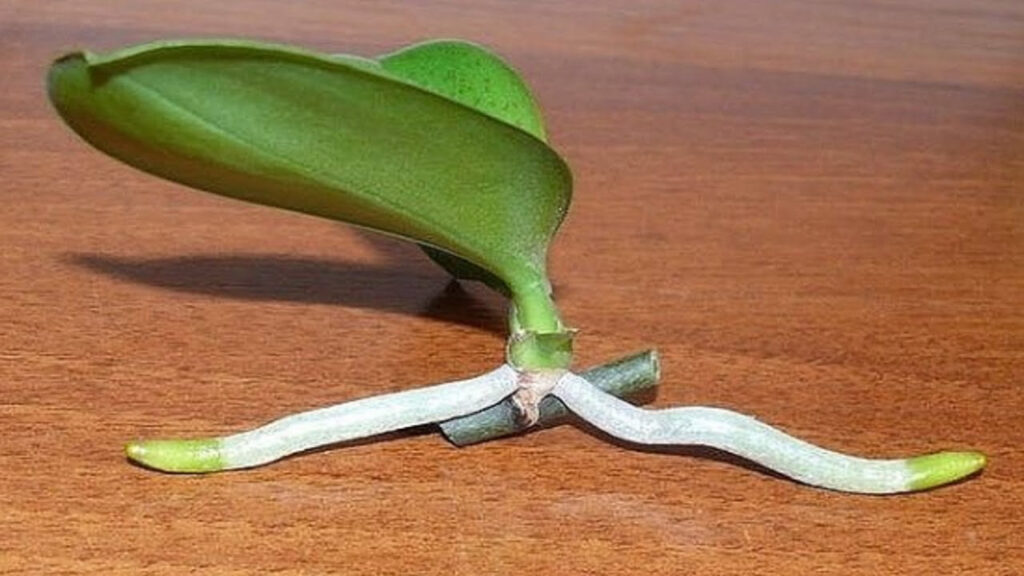Orchids are some of the most eye-catching flowering plants available, yet for some reason their propagation is often overlooked by houseplant enthusiasts. The notion that orchid plants are too fussy to propagate is inaccurate – in fact, there are a variety of ways to propagate all types of orchids! From monopodial orchids to division and cutting, all it takes to propagate orchids is a little bit of patience and care for successful propagation of this majestic species. Learn how propagate an orchid with your own hands, and you’ll be rewarded with several flourishing plants in no time at all. How do orchids reproduce?

How To Propagate An Orchid: What You’ll Need
Growing your own orchid is surprisingly easy and requires minimal equipment – no expertise needed! With just a few simple instructions, anyone can join the fun of propagating their very own orchid seeds into beautiful bloom.
- Utilize rubbing alcohol to keep pruning shears safely sanitized for crisp and clean cuts.
- Show off your prized orchid in style with the right hanger or planter – sized to perfectly suit their unique needs and elevate any space!
- Show off your prized orchid in style with the right hanger or planter – sized to perfectly suit their unique needs and elevate any space!
- Take home a beautiful and healthy orchid, the perfect addition to any area in your house. Whether for decoration or as an exercise of green-thumb skills, this vivid flower will bring life into your space!

How To Propagate An Orchid: The Myths
When it comes to caring for an orchid, propagating one is no exception! With so many myths circulating about this process, however, it’s important to arm yourself with accurate information before attempting.
- Despite promising articles that proclaim it possible to propagate an orchid using just air roots, this isn’t the case. Sadly, such a process is doomed to fail as root cells don’t contain the right components necessary for new growth.
- Propagating a Phalaenopsis orchid is no snap, as you can’t simply use the flower stem cuttings to grow new plants. To achieve this feat, there must be something present called a keiki – find out more about it and discover how to propagate your own moth orchids!
- Leaf propagation is an interesting technique for taking a single leaf and producing another plant – like rewinding time! It’s possible to propagate begonias and succulents this way, but even the mightiest of leaves have limits; orchids are unfortunately unable to be propagated in this manner as stem cells must still remain attached.
Now that we know how not to perpetuate an orchid, let’s explore the various orchid propagation approaches available. From division and cuttings to home-grown seedlings, growing more of these breathtaking beauties is easier than ever!
Did you know that jewel orchids (genus Ludisia) defy the odds when it comes to propagating? These valuable gems of flora require neither complicated methods nor extensive knowledge – just a leaf or simple stem cutting! It’s no wonder they have become one of the most sought-after members in the world of exotic and colorful blooms.

How To Grow An Orchid From A Cutting
Though Phalaenopsis of most orchids that can’t be propagated by a flower stem, don’t give up on cuttings! There are still plenty of orchids reproduce other plants where this method is successful.
Monopodial Orchid Stem Cuttings
You can easily multiply your orchid collection with a few simple steps! For monopodial varieties such as Phalaenopsis and Vanda, simply trim the mature stem. Over time their impressive foliage will create an ample stalk that you can divide for additional plants – each of which ready to flourish in its own space.
To help your orchid reach new heights, consider topping it! Using a clean knife or shears, simply cut the original plant part in half and keep the bottom part with roots still in its current container – giving it plenty of care will ensure healthy growth.
With some patience and luck, you can propagate Vanda orchids by topping them to create a new plant. Cut the top when it’s large enough, place in sphagnum moss, and with proper care your little sprout may soon produce roots of its own!

Sympodial Orchid Stem Cuttings
Sympodial orchids are a unique type mother plant, branching out from multiple canes and bulbs rather than growing in one single stem. Yet despite the abundance of stems these plants contribute to their environment, they cannot be propagated through traditional cutting techniques – making them truly one-of-a-kind blossoms!
The Dendrobium nobile is a popular orchid species known for its advantageous ability to propagate. By carefully cutting the canes and placing them in wet sphagnum, new growths are able to sprout from each node – granting you with beautiful blooms of your own!
Vining Orchid Stem Cuttings
Did you know that there are unique vining orchid species? Vanilla planifolia – more commonly known as the vanilla orchid – is one of them! Believe it or not, this flowery wonder produces real-life vanilla pods. Although these exotic flowers require a bit extra care to remain alive and healthy, they make for an awesome addition to any plant collector’s roster!
Propagating a vining orchid is incredibly easy – all you need to do is snip the vine for your desired cuttings and then let nature take its course! It’s just as simple with Ludisia and Vanilla orchids, most plants whose luscious vines can be rooted in either water or soil. So go ahead and get creative with growing orchids propagation; growing an abundance of gorgeous plants has never been simpler!

How To Propagate An Orchid Through Division
When it comes to orchid propagation and care, did you know that the rhizome of multi-stemmed varieties – such as Dendrobium and Cattleya – can be divided for seed propagation? In contrast, if an orchid is monopodial (like Phalaenopsis) this isn’t possible due to there being nothing left to separate.
Splitting an orchid is a simple way to multiply your plant-parents’ pride and joy! All it takes is one healthy, adult specimen and some careful untangling of the roots. Then divide up the rhizome clump into two brand new orchid plants with 3-4 actively growing canes/bulbs each – usually by just halving them in two. Now everyone has twice as much beauty to enjoy from this delicate blossom!
Propagate your orchid with ease! Plant both halves in a suitable growing medium and watch as each one develops its own root system. It’s the perfect way to multiply these sympodial beauties which can be propagated through division of their canes.
Read also: Healthy orchid roots
How To Propagate An Orchid From Keikis
In Hawaii, the word ‘Keiki’ aptly describes baby orchids – darling copies of their mother plant that sprout from stems and bases. Truly a prodigious feat for such little ones!
If you’re an orchid-owner, then consider yourself in luck if your new plant that has produced a keiki! This is essentially like having the garden do half of the work for propagating – which comes with added convenience when dealing with Phalaenopsis and Dendrobium. But what should be done once this happens? Well, it’s time to start getting creative – as now you can see how far that lucky little keiki will take you!
- Give the keiki some time to establish itself – allow it a chance to form its own vibrant greenery, with robust air root systems.
- After the keiki has fully developed, carefully snip it away from its parent plant with sharp scissors or a knife for an easy transition.
- Give your baby orchid a head start in life! Repot the new arrival into its own container, same as mum’s. Or if you opt to keep them together, then attempt two plants in one pot – they certainly don’t mind sharing their roots when it comes to growth and success.
- The keiki’s active root system ensures further growth, providing a solid foundation for its flourishing future.
Delightful blooms of bright light vibrant colors, these beautiful orchids create a captivating sight. From the delicate pink petals on Dendrobium to the radiant whites and purples of Phalaenopsis, behold an unforgettable panorama!
How To Propagate An Orchid From Back Bulbs
Cymbidiums and other sympodial orchids have a unique feature known as pseudobulbs – these specialized structures help the plant store essential nutrients for survival. What’s interesting is that older bulbs grow orchids which no longer support main plant of growth still provide nourishment, aptly referred to ‘back bulbs’.
Revive those seemingly dead orchid bulbs! With a bit of care, their dormant eyes can be unlocked and coaxed back to life. Give each bulb its own pot for best results – then watch as it blooms into beautiful new growth.
Propagating back bulbs of orchids is a simple process. Begin by gently separating the back bulb itself from its rhizome and positioning it in moist sphagnum to allow for adequate rooting, then move it into an appropriate growing medium once the roots and back bulb are healthy and strong.
With patience and care for new plants, you can bring your orchid’s dormant bulbs to life! It may take a while for one orchid grows one of these beauties to reach its flowering age but it will be worth the wait.
Tip: Give your orchid some extra TLC while it’s in bloom – a bit of disturbance during this time could cause the flowers to fall off prematurely.Nurseries will use propagation methods that are not really available to us amateur houseplant enthusiasts. An example is tissue culture, which can be used to propagate plants through just a single cell!
Bonus: How To Grow An Orchid From Seed
For the most intrepid gardeners, propagating an orchid plant from seed is a challenging but highly gratifying endeavor. Though it’s not without its difficulties and requires considerable patience, starting this beautiful houseplant directly from seed promises immense rewards – if you can make it work!
If you’re looking to expand your orchid garden, why not explore the process of growing from seed? From buying ready-made pods online with a trusted provider to pollinating flowers yourself, it’s an exciting and rewarding way to develop beautiful blooms.
Growing propagating orchids from seed pods may seem simple enough, but the process that follows can be daunting. Once removed from their pod home, these precious babies require specialised handling and a nutrient-rich flask to help them thrive. If you’re up for learning more about this complex procedure to grow propagate orchids, then an extensive PDF guide published by the American Orchid Society could prove invaluable!
Tip: Introducing a successful new addition to your home? Phalaenopsis orchids are the perfect choice! Learn how to give yours tender-loving care and keep it blooming with our easy guide.
Curious about caring for an orchid? Get the inside scoop from fellow plant lovers and learn how to propagate orchid care for these stunning houseplants. Comment below with your questions, tips, and experiences!
How do orchids reproduce naturally?
Orchids reproduce by pollination, or even by offshoots such as Kindels. In nature they often make such decisions especially if they have been in bad conditions and this means quickly securing their continued existence.
Do orchids reproduce by seeds?
It is possible to produce orchids by seed but this requires time and patience. Indoor orchid plants orchid seeds can take as little as 2 years (or even longer to grow). The plants need four to seven years to develop and bloom.
Can orchids grow from cuttings?
Good news is the possibility of splicing phalaenopsis stems. Some dendrobum orchids or some orchids with multiple stems including dendroia nobilis sprout from cuttings also. Fortunately, the vast majority of orchids can not grow from the roots of cutting trees.
How do orchids make babies?
Orchids may reproduce asexually and Keiko is their descendants. In phalanopsis orchids, the keiki is typically formed from growth in the nodes. Like any infant, the keiki need attention in order to develop into a beautiful mature orchid.
Read more: Overwatered orchid leaves, how to save her?
How do orchids reproduce naturally?
Orchids reproduce naturally through a process called pollination, where pollen from the anthers of one flower is transferred to the stigma of another flower, leading to the formation of a seed pod containing numerous seeds. This process is often carried out by insects, birds, or even wind.
Do orchids reproduce by seeds?
Yes, orchids reproduce by seeds. The seeds are formed inside a seed pod that develops after successful pollination. However, orchid seeds have a unique requirement for germination, which often involves a symbiotic relationship with fungi.
Can you grow an orchid from a cutting?
No, orchids cannot be grown from cuttings. Unlike other plants, orchids do not have a single node from which new growth can emerge. Instead, new growth for orchids comes from the base of the plant or from specialized structures called pseudobulbs. As a result, orchids are typically propagated through division or by using specialized techniques like tissue culture.
How do you get orchids to reproduce?
Orchids can be encouraged to reproduce through a process called cross-pollination. This involves transferring pollen from the anther of one orchid flower to the stigma of another orchid flower, either manually or with the help of insects or other natural pollinators. If successful, this can result in the formation of a seed pod containing numerous orchid seeds.
Is an orchid dead when the flowers fall off?
No, an orchid is not dead when the flowers fall off. Orchids are perennial plants that will continue to live and grow even after their flowers have dropped. In fact, many orchids will bloom again after a period of dormancy or rest. It is important to continue caring for the orchid by providing it with the appropriate light, water, and nutrients to ensure that it remains healthy and can bloom again in the future.
How long do orchids live?
The lifespan of an orchid can vary depending on the species and growing conditions. In general, most orchids can live for several years, with some living for decades or even centuries. With proper care, an orchid can continue to bloom and grow for many years.

